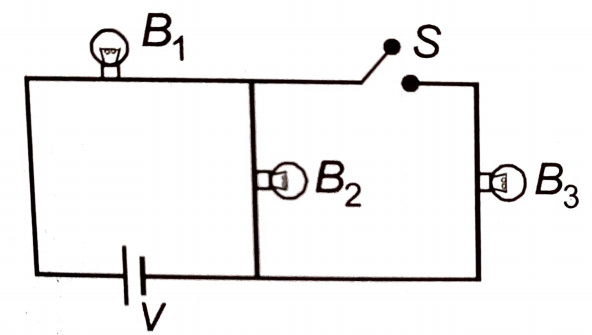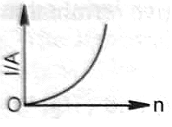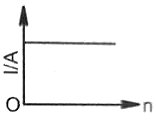Three identical bulbs B1, B2 and B3 are connected to the mains as shown in the figure. If B3 is disconnected from the circuit by opening switch S, then incandescence of bulb B1 will:

1. Increase
2. Decrease
3. Become zero
4. No change

A 50 W bulb connected in series with a heater coil is put to an AC mains. Now the bulb is replaced by a 100 W bulb. The heater output will
1. Double
2. Halve
3. Increase
4. Decrease
Two heater coils separately take 10 minutes and 5 minutes to boil a certain amount of water. If both the coils are connected in series, the time taken will be:
1. 15 min
2. 7.5 min
3. 3.33 min
4. 2.5 min
The power generated across a uniform wire connected across a supply is H. If the wire is cut into n equal parts and all the parts are connected in parallel across the same supply, the total power generated in the wire is:
1.
2. n2H
3. nH
4.
When electric bulbs of the same power, but different marked voltage are connected in series across the power line, their brightness will be:
1. proportional to their marked voltage.
2. inversely proportional to their marked voltage.
3. proportional to the square of their marked voltage.
4. the same for all of them.
A battery consists of a variable number n of identical cells having internal resistance connected in series. The terminals of the battery are short-circuited and the current I measured. Which one of the graph below shows the relationship between I and n?
1. 
2. 
3.
4.
Three identical resistors are connected across a voltage source V so that one of them is in parallel with two others which are connected in series as shown. The power dissipated through the first one, compared to the power dissipated by each of the other two, is approximately:
1. the same
2. half as much
3. twice as much
4. four times as much
A metallic resistor is connected across a battery. If the number of collisions of free electrons with the lattice is somehow decreased in the resistor (for example cooling it), the current will:
1. Increase
2. Decrease
3. remain the same
4. become zero
A constant voltage is applied between the two ends of a uniform metallic wire. Some heat is developed in it. The heat developed doubles if:
| 1. | both the length and the radius of the wire are halved. |
| 2. | both the length and the radius of the wire are doubled. |
| 3. | the radius of the wire is doubled. |
| 4. | The length of the wire is doubled. |
In an electrical circuit containing a battery, the charge (assume positive) inside the battery:
1. always goes from the positive terminal to the negative terminal.
2. may go from the positive terminal to the negative terminal.
3. always goes from the negative terminal to the positive terminal.
4. does not move.








